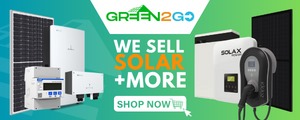D
dennis2011
Yes Kate, even small shadows affect system disproportionatley. My roof is only 33 degrees pitch, the shallower the better for a dual east/west. Did you know that even a flat roof gives 90% of the return of a due south roof? With east/west you get a longer more even production day without the big midday spike. Even in June with the sun directly overhead the sunlight is striking each panel at a glancing angle, hence one of the explanations for the 85% figure.
In the case of your installation you could have considered 6 panels on the south face plus 8 panels on the east face. You might have saved nearly £1000 on the install cost with very little reduction in annual output. The inverter still copes ok with 2 unequal strings. East is slightly better than West for 2 reasons. Firstly east roofs are usually colder than west roofs. Secondly due to the azimuth angle (tilt of the earth) changing through the seasons the sun rises closer to the South East on December 21st but closer to the North East on June 21st. June is one of the peak months for solar production.
In the case of your installation you could have considered 6 panels on the south face plus 8 panels on the east face. You might have saved nearly £1000 on the install cost with very little reduction in annual output. The inverter still copes ok with 2 unequal strings. East is slightly better than West for 2 reasons. Firstly east roofs are usually colder than west roofs. Secondly due to the azimuth angle (tilt of the earth) changing through the seasons the sun rises closer to the South East on December 21st but closer to the North East on June 21st. June is one of the peak months for solar production.








